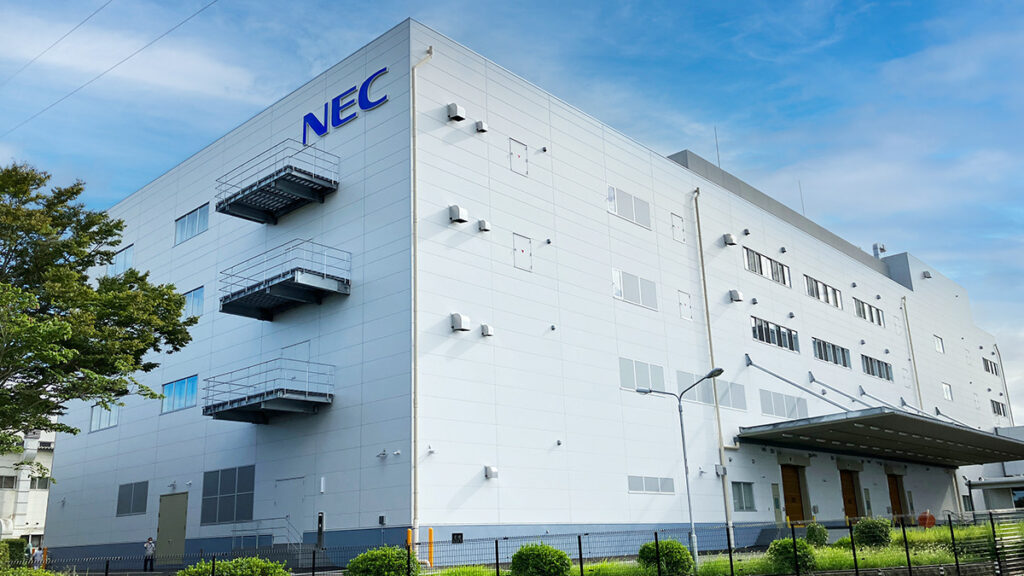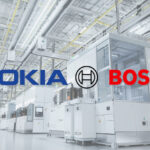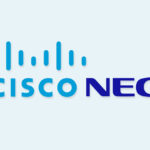ASIA ELECTRONICS INDUSTRYYOUR WINDOW TO SMART MANUFACTURING
NEC Platforms’ New Kakegawa Factory Utilizes 5G
NEC Platforms, Ltd. recently began full-scale operations of its new factory in Kakegawa City in Japan’s Shizuoka Prefecture. Accordingly, the new factory will utilize advanced technologies such as autonomous mobile robots (AMR) (1), utilizing local 5G. The company also tapped 5G to simultaneously control multiple AMRs and automated guided vehicles (AGV) (2).
NEC Platforms said the adoption of 5G will not only automate and advance the manufacturing process. Most importantly, it will also improve production efficiency by 30 percent for the entire Kakegawa Plant.

With the introduction of AMR, the degree of freedom in the floor layout within the factory has improved. Thus, NEC Platforms will flexibly respond to the changing market environment and customer needs. This includes launching production lines for new products and increasing or decreasing production. Consequently, installing local 5G on the production line and operating multiple AMRs is an advanced initiative at the manufacturing site.
Solidifies Domestic Production
The Kakegawa Plant serves as a manufacturing base that supplies a variety of network-related equipment and supports the social infrastructure business of the NEC Group. Recently, Japan has been striving to strengthen its supply chain network amid global semiconductor supply chain challenges. Thus, propelling the need to build an advanced domestic production system from the viewpoint of economic security.
On the other hand, NEC Platforms said the new factory building with improved production efficiency will strengthen its domestic production system. For that reason, providing a stable supply of network-related equipment over the medium to long term.
The new factory will have four floors above ground and a total floor area of 15,632 square meters. It will mainly manufacture 5G mobile routers, 5G home routers, home gateways, enterprise LAN switches (3), and wireless LAN products. Moreover, it will utilize the experience and know-how that the NEC Group has accumulated over many years in manufacturing.
In addition, solar panels have been installed on the roof of the new factory, and a self-consumption solar power generation system has been introduced. The alternative power generation system can generate 281Mwh of power annually. Hence, about 10% of the electricity consumed by the new plant are exclusively from renewable source.
Main Features of Factory
Improving productivity by utilizing cutting-edge digital technology
NEC Platforms has built a local 5G communication environment with features such as secure, wide-area coverage. It will use Visual SLAM technology (5) for position accuracy from the camera. Thus, allowing AMR to run autonomously.
To operate AMR, the new factory utilizes NEC’s Multi-Robot Controller (MRC) (6 ). The MRC calculates the optimal travel route for AMR in real time, avoids traffic jams, and controls intersections using AGV position information.
Since 2021, the company has been working at its Kofu plant to verify the use of local 5G at manufacturing sites. Thus, the first time to actually operate local 5G at a manufacturing site of the NEC Group. In addition, NEC has also introduced a production planning system that utilizes quantum computing technology. This aims to optimize work plans and personnel allocation in the surface mounting process (SMT process). Here, the system mounts electronic components on printed circuit boards.
Furthermore, it has also developed a new function that constantly recalculates the optimal work order based on the work progress status. At the same time, instructs workers, which reduces the time it takes to set up (7) for a more efficient production. Application of DX, NEC said, will further accelerate the said manufacturing site.
Promoting Secure Production
NEC Platforms also gives weight to security to ensure the protection of confidential production information throughout the supply chain. Particularly, the company integrates cybersecurity systems and business continuity plan into the new factory. These aim to prevent cyber threats or prevent impacts of such attacks.
In addition, NEC Platforms is also working to reduce cyber security risks by segmenting production networks. At the same time, introducing security equipment equipped with Unified Threat Management (UTM) functions. In this way, NEC Platforms’ Kakegawa site aims to become a smart factory that links all kinds of data and systems, creating safe, secure, and efficient, manufacturing. Moreover, it will help realize a more sustainable society.
Notes:
- (1) Autonomous Mobile Robot: While automated guided vehicles (AGVs) are robots that move around predetermined routes and transport objects. AMRs can autonomously move around within predetermined areas and transport objects. becomes.
- (2) Automatic Guided Vehicle
- (3) A device that enables high-speed communication between devices within the same network. In contrast to switches, routers are devices that enable communication between different networks.
- (4) Based on the Ministry of the Environment’s estimates for fiscal year 2020 CO2 emission statistics survey of the household sector, the annual CO2 emission per household stands at 2.9t.
- (5) Visual SLAM is a technology that simultaneously estimates one’s own position and orientation and creates an environmental map using video data.
- (6)”NEC Multi-Robot Controller” is an autonomous mobile robot control software that can centrally manage and control multiple robots of various types.
- (7) When producing multiple types of products on a single SMT line, a surface mounting process that mounts electronic components on printed circuit boards. This changes the settings of hundreds of types of components and manufacturing conditions when changing the type of product.




